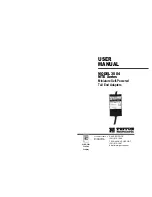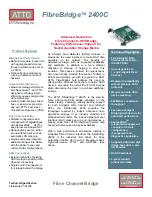
2. If you need to change the parameters for a different board, use the
arrow keys to move to the board number you want to configure,
and then press
Enter
. The selected board is highlighted.
3. The
Turbo
NICSETUP utility displays the User Selected
Configuration dialog box, which lists all the parameters that
are user-definable for the selected board. It also lists two options
for writing the new parameters to
Turbo
memory:
• Write configuration data
• Write default configuration data
4. Change the parameters using one of the following:
• If you wish to change all parameters to the default, select
Write Default Configuration Data
and press
Enter
.
The default values are reflected in the User Selected
Configuration dialog box by an asterisk (*).
A confirmation window appears. Press
Enter
to confirm that
you wish to change all the parameters to the default settings.
• If you need to change one or more of the parameters from the
current settings, use the arrow key to highlight the parameter
and press
Enter
.
The NICSETUP utility lists all the acceptable settings for the
selected parameter.
To change the parameter, use the arrow keys to highlight the
appropriate parameter and press
Enter
.
The new value appears in the User Selected Configuration
dialog box.
To write the new parameters to memory, select
Write
Configuration Data
.
5. Exit the NICSETUP utility and turn off power to the PC. The
new configuration data takes effect the next time the system is
turned on. If the PC does not operate correctly, you may have set
one of the
Turbo
board parameters to the same setting as another
module or system resource. Refer to the Resolving BUS Conflicts
on ISA and EISA Systems section for more information.
3–9
Summary of Contents for Digital EtherWORKS 3 Turbo
Page 8: ......
Page 12: ...Figure 1 Turbo Product Kit PN DE203 AA LJ 02592 TI0 2 4 3 1 5 W 2 W 1 x ...
Page 13: ...Figure 2 Turbo TP Product Kit PN DE204 AA LJ 02621 TI0 2 4 3 1 W 2 W 1 xi ...
Page 16: ......
Page 30: ......
Page 66: ......
















































